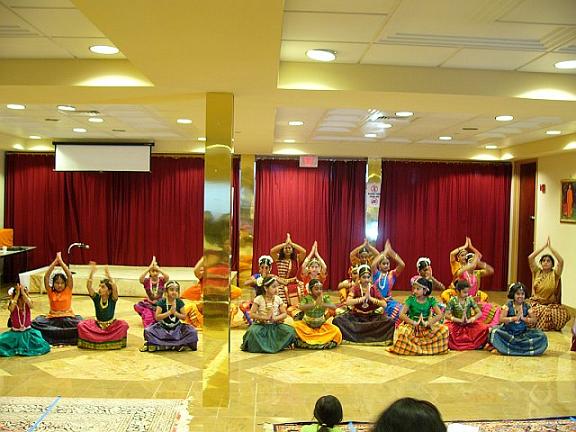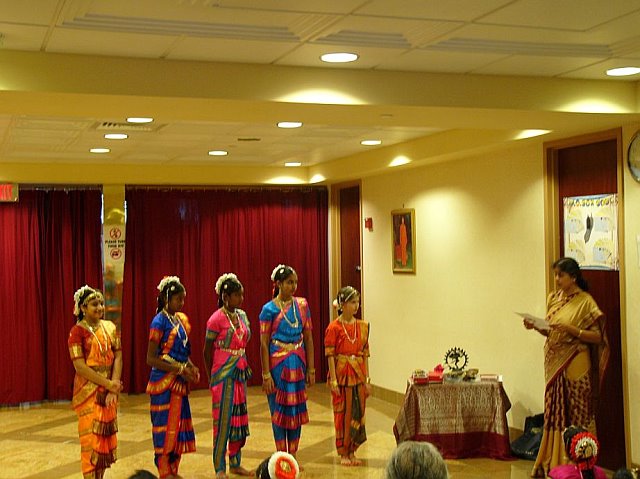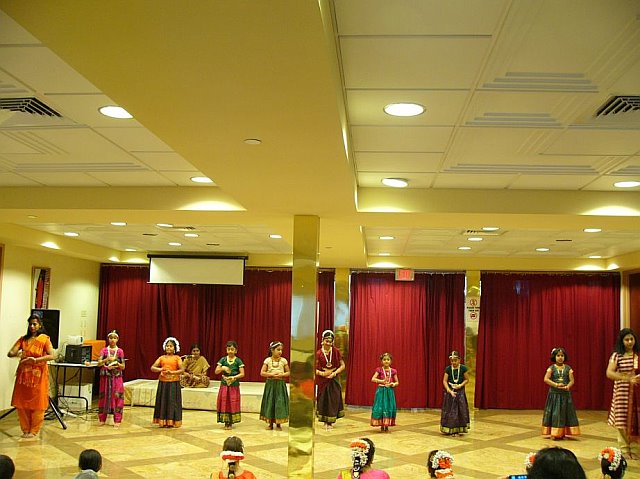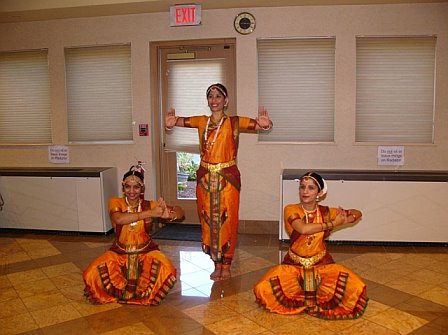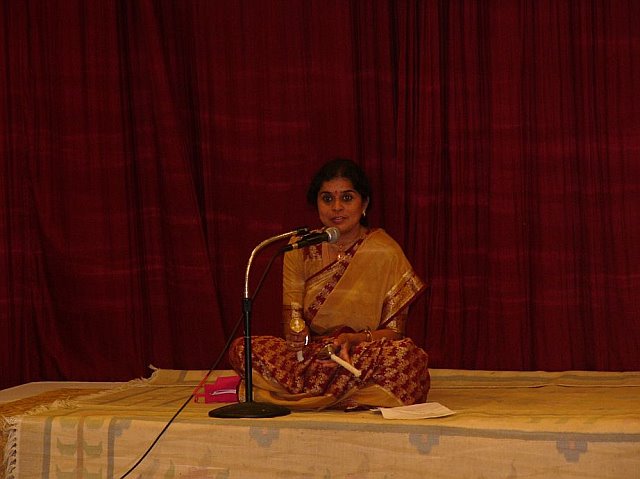Contribute
| Vidhyarambam Karishyaami |
S.Ramamoorthy
11/13/2007
Dasara is celebrated all over India with a lot of fanfare and religious fervor, with poojas, music and dance over 10 days. The tenth day is called Vijaya Dasami and considered a day of victory as it signifies the day Shakthi slays the demon, Mahishasura, signifying the victory of good over evil. Vijaya Dasami is a day to begin new ventures, be it business or education, as it is an auspicious day and assures one of success. It is also the day to honor one's guru (teacher).
In tune with the tradition, the Natyanjali School of dance offered a pooja-cum dance recital led by the Director, Jeyanthi Ghatraju, at the Chinmaya Maruti on Oct. 21.The itinerary itself was quite interesting to go through, with the guru singing and doing the nattuvangam for the items presented. Jeyanthi conducted the ceremonies in the highly established traditions, and the highlight was a salangai (anklet) pooja.
Salangai pooja is usually done when one has learnt Bharatanatyam for a few yrs. and attained a good handle on talam. One is not allowed to wear their Salangai and perform until after the salangai pooja. On a Vijaya Dasami day, the family and friends get together at a temple, wherein pooja is done for the new salangai and the guru offers the same to the student(s).Then, the students wear their salangai for the first time and present a mini recital, mostly without a varnam. In this day and age of buying the costume, jewelry and the salangai even before the children start classes, it makes sense to emphasize the value of a salangai pooja and why one needs to go through at least some formal study before wearing the salangai.
Anklets were offered to five of the students (namely Svetoslava dePaula, Khushboo Gray, Khushali Gray, Neha Pillai and Nithisha Prasad), who have shown sustained interest over years and are ready to perform in public with their bells. The salangai pooja commenced with the Shanthi matra, followed by prayers to Ganesh, Guru, Shiva and for forgiveness. Then, the anklets were dedicated to Nataraja, followed by an oath taken by the students along with the guru that they'll:
* use their energy and knowledge of this art form in positive ways of enriching lives
* work earnestly to bring grace and honor and to uphold the ethics of the art form,
* never contribute voluntarily or involuntarily to actions that bring disgrace to the art or the guru.
The students received their anklet bells from their guru and were now ready to exhibit what they'd learnt thus far. The items presented by them along with the rest of the students of Natyanjali followed the conventional modes starting with the Slokams, Maha Ganapathim in ragam Nattai, Pushpanjali in Gambhira Nattai, Nataraja anjali, Shanmukha kavuthuvam, a jathiswaram in ragam Khamas, Brindavanadolu, a Purandaradasa krithi and ending with a thillana in ragam Paras. The items were deft fully distributed among the students with the aim of exhibiting their prowess. It was a treat to watch the dancers, particularly the ones less than 10 yrs. performing with sincere approach and devotion. The program concluded with Kshirabdhi kanyakaku on Goddess Lakshmi in ragam Kurinji. In short it was quite an eye opener and one could appreciate the value of learning Indian arts traditionally and why certain rituals are important and what they symbolize in the big picture. The students sure offered a great deal to the guru that Vijaya Dasami day through their dance; proud was the guru, and so were the audience.
You may also access this article through our web-site http://www.lokvani.com/
